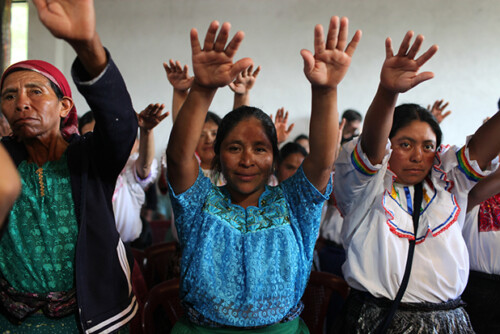This special issue of The Scholar & Feminist Online is devoted to new scholarship at the intersection of science and technology studies (hereafter STS), race/postcolonial studies, and feminist and queer theory, with a special emphasis on three areas of research: Eugenic Legacies and Infrastructures of Reproduction, Cross-species and Cross-kingdom Enmeshments, and Governmentality and Activism in Biotechnical Times.
For those of us working at the intersections of gender, sex, race, and technoscience, we often find ourselves split between two disciplinary archives and two political commitments. For instance, in thinking how race and STS come together, we might turn to critiques of colonial medicine that historicize how techniques of sanitation and public health have extended the imperial reach of white masculinity, and link those histories to how colored and colonized bodies (and body parts) remain instrumental to the study of disease etiology, to the development of vaccines, to the extension of some life—pursuit of life unlimited—that entails the oftentimes invisible curtailment and destruction of other lives—Life Ltd.1 Another way in which concerns of scholars of race and STS have historically come together is through the examination of population genetics and the ways in which a US framework of race linked to a narrative of geographic origins has been further disseminated and biobanked via the International Haplotype Mapping project;2 or still further, we might examine the fraught logics whereby transnational consortia and corporations bioprospect the genes and pharmacopeia of indigenous peoples.3 What isn’t necessarily at the forefront of such discussions are frameworks attentive to gender and sexuality, even as populations defined by shared gene pool, for example, presuppose reproduction and the labor of women’s bodies.
In thinking how feminist concerns have conventionally been taken up in STS, intense interest directed “at the scale of bodies”4 has been aimed at reproduction and fertility, even as the disaggregating effects of assisted reproductive technologies (ART) scatter the locales and agents of gamete provisioning, gestational labor, and postnatal caretaking or babysitting work, so that reproduction becomes lucid as a distributed and ensemble choreography, rather than as a putative watershed in any individual woman’s life cycle.5 As argued by Dorothy Roberts’ Killing the Black Body (1995),6 and as Rene Tajima-Peña and Laura Briggs pursue further in this issue, critiques by women of color have added complexity and contradiction to any singular notion of a feminist take on reproductive politics. Technologies of reproduction extend to infant formula, to nature-cultures of foodways and food marketing, and to relations of care and nurture that have become medicalized, professionalized, and made clinically experimental as well. Laboratory practices and feminist social movements have denaturalized women’s bodies and metabolic labor as the privileged loci and agents of generating and sustaining life, whether by way of embodied practices of gestation and feeding/nursing, or the material and emotional-cognitive work of raising offspring or taking care of the elderly and the ill.
In addition, parasexual generative techniques, such as cloning and the inducing of pluripotent stem cells (iPSCs) from adult somatic cells, have already altered the contours of nascent generativity from meiosis, egg and sperm, sexual combination, and embryology (studied by embryologists and medicalized as ART); to mitosis/cytokinesis, adult stem cells, and (trans)differentiation of function (gene expression/behavior) in maturing cells (studied by cell biologists and enrolled in regenerative medicine, oncology, and molecular medicine). In light of these developments, we may want to question whether reproduction must necessarily remain—or if it simply has served historically—as the privileged entryway into a feminist engagement with STS. The three sections of this special issue both remember and expand upon feminist and critical race studies’ interrogations of reproduction while also mapping, evaluating, and theorizing the salience of a women’s studies approach to our contemporary moment of amplified awareness as to the plasticity of biological life.7
In their exploration of how feminist inquiry and race studies have coassembled with STS in the present moment, each of the contributors to this special issue was asked to consider the following questions:
- How have STS’s emphases on nature-cultures, on the agency of non-human actors, and on the scale of cellular, microbial, and chemical interactions changed the kinds of questions we ask and problems we confront in femiqueer studies and race/postcolonial studies? By the same token, how has a feminist postcolonial approach to the topic of technology and biological modification altered what we think “counts” as technology, expertise, or scientific (authoritative) knowledge?
- How do biotechnologies both ameliorate and produce new health disparities and augment the production of “expendable populations”?
- How have nonnormatively gendered bodies, poor women’s bodies, and gestational body parts served as opportune sites and sources for medical experimentation and the speculative contouring of life unlimited?
- What methods (historical materialist, psychoanalytic, ethnographically realist, deconstructive, cybernetic/systems theory) lend themselves to this feminist bioscientific critique?
- To what extent have feminist approaches to reproductive labor and childrearing (the emotional labor of cultivating human life) made connections with bioscientific research, practicalities, and ethics?
- Finally, how have literature and the arts shaped and reflected upon the biomedical imagination?
- Warwick Anderson, Colonial Pathologies: American Tropical Medicine, Race, and Hygiene in the Philippines, (Durham: Duke UP, 2006); Catherine Waldby and Robert Mitchell, Tissue Economies: Blood, Organs, and Cell Lines in Late Capitalism, (Durham: Duke UP, 2006); Nancy Scheper-Hughes, “The Last Commodity: Post-Human Ethics and the Global Traffic in ‘Fresh’ Organs,” Aihwa Ong and Stephen Collier, eds., Global Assemblages: Technology, Politics, and Ethics as Anthropological Problems, (Malden: Wiley-Blackwell, 2005): 145-67; Lawrence Cohen, “The Other Kidney: Biopolitics and Beyond,” Body and Society 7.2-3 (2001): 9-29. Reprinted in Nancy Scheper-Hughes and Loic Wacquant, eds., Commodifying Bodies (London: Sage, 2002): 9-29; Lawrence Cohen, “Operability, Bioavailability, and Exception,” Aihwa Ong and Stephen Collier, eds., Global Assemblages: Technology, Politics, and Ethics as Anthropological Problems, (Oxford: Wiley-Blackwell, 2005): 79-90. [↩]
- Kim Tallbear, “Narratives of Race and Indigeneity in the Genographic Project,” Journal of Law, Medicine and Ethics (2007): 412-424; Catherine Bliss, Race Decoded: The Genomic Fight for Social Justice (Stanford: Stanford UP, 2012). [↩]
- Jenny Reardon, “Democratic Mis-Haps: The Problem of Democratization in a Time of Biopolitics,” BioSocieties 2 (2007): 239-256; Jenny Reardon and Kim Tallbear, “Your DNA is Our History: Genomics, Anthropology, and the Construction of Whiteness as Property,” Current Anthropology 53.5 (2012): S233-S245; Laura A. Foster, “Patents, Biopolitics, and Feminisms: Locating Patent Law Struggles Over Breast Cancer Genes and the Hoodia Plant,” International Journal of Cultural Property 19.3 (2012): 371-400. [↩]
- See Murphy in this issue. [↩]
- Charis Thompson, Making Parents: The Ontological Choreography of Reproduction, (Cambridge: MIT Press, 2007); Kalindi Vora, “Indian Transnational Surrogacy and the Disaggregation of Mothering Work,” Anthropology News (2009): 9, 12; Kalindi Vora, “Medicine, Markets and the Pregnant Body: Indian Commercial Surrogacy and Reproductive Labor in a Transnational Frame,” S&F Online (Fall 2010-Spring 2011), available at https://sfonline.barnard.edu/reprotech/vora_01.htm [↩]
- Dorothy Roberts, Killing the Black Body: Race, Reproduction, and the Meaning of Liberty, (New York: Vintage, 1998). [↩]
- Lawrence Goldstein, Director of the UCSD Stem Cell Program: “Stem cells […] are biological plastics and we are in fact at the dawn of an era of biological plastics where we are in the process of trying to learn how to take this biological material that can become any cell type in the adult.” Available at http://www.youtube.com/watch?v=QyoZuxHhvvE. [↩]





